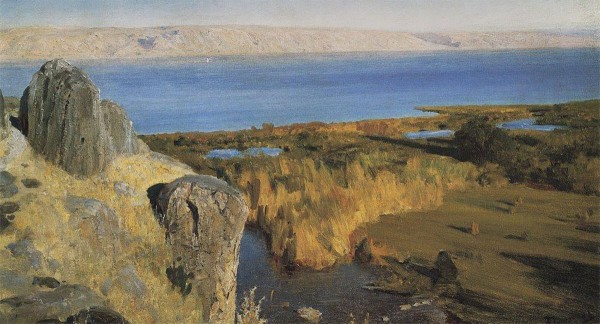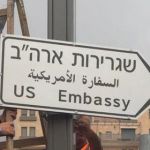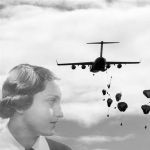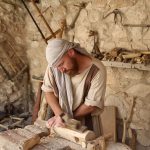
The soil of Israel is rich and the harvests bountiful today thanks in large part to the work of the pioneering youth who immigrated nearly 100 years ago.
“Do not fear, for I am with you; I will bring your offspring from the east, and gather you from the west. I will say to the north, ‘Give them up!’ and to the south, ‘Do not hold them back.'” (Isaiah 43:5–6)
Nisan 10 on the Hebrew calendar marks a historic day in God’s prophetic plan for Israel.
Nearly 3,500 years ago on this day, the Jewish People as a nation made their first Aliyah (immigration) to Israel:
“On the tenth day of the first month the people went up from the Jordan and camped at Gilgal on the eastern border of Jericho.” (Joshua 4:19)
Within their story is the impetus for the pioneer movement that birthed a nation in one day seventy years ago — fulfilling Biblical Prophecy!
The First Pioneers: The Vanguard
Joshua led the Israelites out of the wilderness across the Jordan River and camped in the plains of Jericho. No doubt he and his army were surveying the walled city, strategizing how to seize it while the women made preparations for the Feast of Passover that would soon begin on Nisan 14.
God did not leave Joshua to figure this out on His own.
He sent His own “Commander of the Army of the Lord,” and the Lord gave Joshua the divine battle plan. Within these words, we find the inspiration for the pioneer spirit of the Jewish People:
“Then Joshua rose early in the morning, and the priests took up the ark of the Lord. The seven priests carrying the seven trumpets of rams’ horns before the ark of the Lord passed on, blowing the trumpets continually. The armed men [hechalutz] went before them [as a vanguard], and the rear guard came after the ark of the Lord, while the trumpets blew continually.” (Joshua 6:12–13)
HeChalutz, the armed men who were the vanguard, the brave ones out in front, became the chosen name for many of the early Zionist movements, but especially those groups that trained an “army” of young Jewish people for the hard work of agricultural settlement in the Land of Israel.
Little did they know that one day they would be called into a different kind of army — an underground rescue operation saving thousands of Jewish lives.
But first, let’s see what the modern pioneers acquired.
The Dreamland
The pioneers of the 4th century BC, led by Joshua, inhabited a land of bountiful crops, blooming orchards, and abundant vineyards that fed large cities and small villages alike.
The pioneers of 19th century AD did not acquire such blessings.
In 1867, just 15 years before the first large wave of immigrants entered Israel, Mark Twain records:
“Of all the lands there are for dismal scenery, I think Palestine must be the prince. … Over it broods the spell of a curse that has withered its fields and fettered its energies. … And why should it be otherwise? Can the curse of the Deity beautify a land?”
For Twain, the holy land of Israel had long become “sacred to poetry and tradition — it is dreamland,” he wrote in (Innocents Abroad (chapter 56).
Then God said — It’s time to revive the dream.

Jerusalem from the northeast (1859–1861), with the Dome of the Rock and Al-Aqsa at the left. Notice the vacant, unkempt land beyond the Old City walls. (National Library of Israel, Holy Land Image Collection)
Moses prophesied that the Jewish People would experience a time of judgment and exile (Deuteronomy 29:25–28); but in the very next chapter, he also prophesied that God would restore them:
“The LORD your God will bring you back from captivity, and have compassion on you, and gather you again from all the nations where the LORD your God has scattered you. If any of you are driven out to the farthest parts under heaven, from there the LORD your God will gather you, and from there He will bring you. Then the LORD your God will bring you to the land which your fathers possessed, and you shall possess it. He will prosper you and multiply you more than your fathers.” (Deuteronomy 30:3-5)
While many people claim that the modern state of Israel is a manmade state, void of God’s hand in the matter, the reality is that no man can overturn a judgment of God or fulfill a promise of God until He says, “It is time.”
God used and is still using men and women through the pioneering spirit of hechalutz to accomplish His prophetic plan.

Youth making Aliyah from Germany, marching toward Kibbutz Ein Harod in the Jezreel Valley of northern Israel on February 16, 1934. (Government Press Office, from PikiWiki)
The HeChalutz Arrive
While a small remnant of Jewish People have always resided in the land of Israel, the “first wave” of about 30,000 immigrants (olim) arrived from Eastern Europe, Russia, and Yemen between 1882 and 1903 as an escape from the pogroms (organized massacres) and rising anti-Semitism in those nations.
Some came through the efforts of the Hovevei Zion (Lovers of Zion), one of the earliest pioneer movements (established in 1890) to restore an Israeli homeland, which at that time was part of the Turkish (Ottoman) Empire.
Idealism was high; food and money scarce. Many pioneers were untrained to work the unforgiving land. They were also unprepared for the high rates of Turkish taxation and laws restricting Jewish commerce.
Up to 80 percent left Israel within several years. A more organized and effective pioneering method was needed if Israel could ever be called Israel again.
The FIrst Zionist Congress was held in 1897 in Basel, Switzerland with
some 200 participants from seventeen countries, 69 of whom represented
various zionist societies.
In 1897, Theodor Herzl (1860–1904), known as the father of the Jewish State, launched the Zionist Congress with the support of members of Hovevei Zion. Zionism now had an official, funded structure and HeChalutz as a movement greatly expanded.
In 1905, Menachem Ussishkin, the head of the Jewish National Fund called for the establishment of “a general Jewish workers’ organization made up of unmarried young people of sound body and spirit.”
In his plan, “each member would commit to settle Eretz Israel for a period of three years, where he would render army service for the Jewish people, his weapons being not the sword and the rifle, but the spade and the plow.” (“Our Program,” 1905)

Threshing wheat in the Jezreel Valley at Kibbutz Merhavia (meaning a large place, as in Psalm 118:5). It was established in 1929 by members of Hashomer Hatzair (The Young Guard), a HeChalutz youth movement that began in 1913. (National Library of Israel, The Holy Land Collection)
In 1917, the HeChalutz movement was invigorated by The Balfour Declaration, which declared that the British government (who ruled the land of Israel at the time) viewed with favor the establishment of “a national home for the Jewish people, and will use their best endeavours to facilitate the achievement of this object,”
Groups of chalutzim sprang up in Russia, Poland, Lithuania, Latvia, Galicia, Bessarabia, the Americas, and more.
On January 6, 1919, the first conference of the HeChalutz took place in Moscow and agreed to these guiding principles:
HeChalutz is a nonpartisan association of workers who have resolved to settle in Eretz Israel in order to live by their own labor, rejecting exploitation of others’ work; it will train its members for life in Eretz Israel, transport them there, and facilitate their absorption in the country; its final goal is the establishment of a sovereign Jewish nation in Eretz Israel. (Jewish Virtual Library)
Though they were now organized and trained, these young pioneers trying to make Aliyah met many obstacles, such as anti-Zionist British authorities restricting Jewish immigration. As well, HeChalutz eventually became illegal in Soviet Russia in the late 1920s. But the window of opportunity that existed allowed many small groups to make the long and perilous journey.
In 1927, according to statistics published by the national workers’ union (Histadrut), 43 percent of all workers in the land, and 80 percent of the members of kibbutzim had been trained on farms around the world by HeChalutz before settling in Israel.
These trained Jewish pioneers operated on the Biblical principle that the Jewish nation should be a blessing to the whole world.
“I will bless those who bless you, and him who dishonors you I will curse, and in you all the families of the earth shall be blessed.” (Genesis 12:3)

Chalutzim (pioneers) draining the swamps in the Jezreel Valley in the 1930s. (National Library of Israel, Holy Land Collection)
One of their first tasks, even at the cost of their own lives, was to drain the swamps, which helped to eradicate mosquito infestations and, therefore, malaria. The Muslim infant mortality rate fell from 201 per thousand in 1925 to 94 per thousand in 1945 and life expectancy rose from 37 years in 1926 to 49 in 1943. (Jewish Virtual Library)
Some of these immigrants were family members (great aunts and uncles) of our Bibles For Israel Ministry staff. They plowed the swampland before it was “flowing with milk and honey” again. Two of them died of malaria.
In 1939, the Jewish scholar Martin Buber wrote a letter to India’s independence leader Mahatma Ghandi, describing the principle that HeChalutz is to be a blessing to all:
“The Jewish farmers have begun to teach their brothers, the Arab farmers, to cultivate the land more intensively. Together with them we want to cultivate the land, to ‘serve’ it, as the Hebrew has it. The more fertile this soil becomes, the more space there will be for us and for them. We have no desire to dispossess them; we want to live with them.”
Israel’s first Prime Minister, David Ben-Gurion, had helped to develop the American branch of HeChalutz in 1915. He also helped to found the trade unions in Israel, in particular the Histadrut. From this position in 1920, he announced,
“Under no circumstances must we touch land belonging to Fellahin [Arab workers] or worked by them. Only if a Fellah [Arab agricultural worker] leaves his place of settlement should we offer to buy his land, at an appropriate price.”
As it turned out, the Jewish National Fund paid up to ten times the standard price for land in Israel during Britain’s rule. In 1944, rich, fertile soil in Iowa cost $110 per acre. For the same amount of land in Israel, the Jewish pioneers paid over $1,000 for arid or semi-arid land. (Jewish Virtual Library)
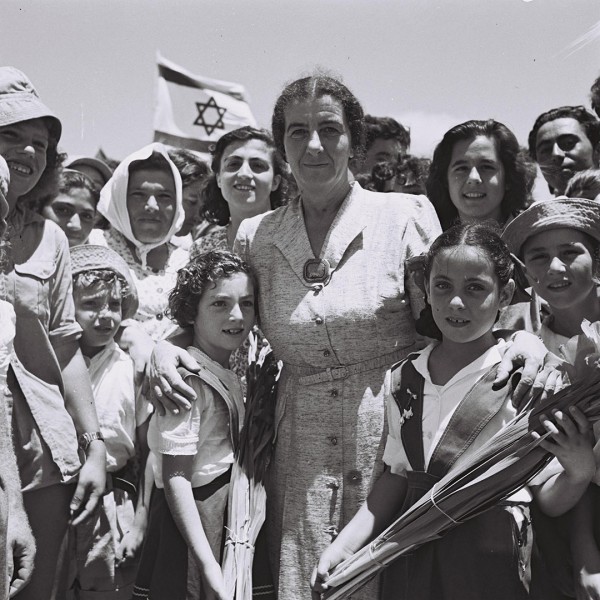
Golda Meir, who became Israel’s only female prime minister to date, was Secretary of the women’s HeChalutz chapter in the USA from 1932–1934. In this 1950 photo, she is standing with children from Kibbut Shefayim, which was founded in 1935 by Polish immigrants in central Israel.
HeChalutz to the Rescue
Another meaning of hechalutz, which is found in the poetry of Hebrew Scripture is rescue. As the psalmist writes,
“Look upon my affliction and [chalutz] rescue me, for I do not forget Your law.” (Psalm 119:153)
In the 1930s and early 40s, as World War II loomed and Hitler began collecting Jews for extermination throughout Eastern Europe, the focus of HeChalutz and other Zionist youth organizations could no longer be contained to training men and women for agricultural work in a revived Jewish homeland.
The young Zionists had a choice to make: resist the Nazis with weapons and die as martyrs or resist with cunning and ingenuity and save lives.
“We chose saving life and not martyrdom,” said Moshe Alpan, a leading member of HaShomer Hatzair (The Young Guard), which was a Hechalutz resistance command group of the Zionist Organization in Budapest.
Among many other duties, such as finding safe homes for children, Moshe led Operation Tiyul (Hebrew for Hike), in which he helped Jews cross into Romania where they could reach the Black Sea ports and make Aliyah to Israel. (The Story of Moshe Alpan)
“The logistics were complicated,” he said. Moshe had to first identify those who were willing to take the risk of being caught with forged documents, jailed, and even killed on their way to make Aliyah.
These chosen Jewish people also had to be industrious, hard workers who would be a blessing to the people of Israel in their generation and beyond.
Once identified, Moshe taught them how to behave without being caught and gave them $20 for necessities in Romania. He bought their train tickets and often sat on the same train with them, watching from afar.
In Romania, the Zionist Federation absorbed them, giving them further documents, food, clothing, and some more money to reach Bucharest and then on to the ports and, ultimately, Israel.

This ship left the port of Tulcea in Romania on March 22, 1939 with about 700 illegal immigrants aboard and landed at an unknown beach in Israel. A British police ship arrived, and one man was shot and killed. (The Clandestine Immigration and Navy Museum, from PikiWiki)
“Nothing was a given and every day you had to come up with a different improvisation,” Moshe said.
While thousands were saved, sadly, many who tried to emigrate along with the underground leaders who ran the document forgery factory were caught, jailed, tortured, and some were executed.
However, due to a shrewd bribe of a prison guard, Moshe was able to save 120 prisoners of the Zionist underground and fellow Jews.
The youth of these underground rescue groups knew the risks and organized themselves anyway based on the values they received in their HeChalutz training centers: values of brotherhood, mutual aid, and a deep appreciation for Zionism and their Judaism.
Members of the Hashomer Hatzair Zionist youth movement (1920), some of whom settled in the Gan Shmuel Kibbutz in Haifa.
As the Second World War got underway in 1939, there were about 100,000 members in the HeChalutz movement worldwide.
Approximately 60,000 of them had already made Aliyah.
Another 16,000 were living in agricultural training centers (hachsharot), awaiting their turn to realize the Israeli dream.
When the Lord restored the fortunes of Zion,
we were like those who dreamed.
Our mouths were filled with laughter,
our tongues with songs of joy.
Then it was said among the nations,
“The Lord has done great things for them.”
The Lord has done great things for us,
and we are filled with joy.
Restore our fortunes, Lord,
like streams in the Negev.
Those who sow with tears
will reap with songs of joy.
Those who go out weeping,
carrying seed to sow,
will return with songs of joy,
carrying sheaves with them.
(Psalm 126)
The chalutzim, the pioneers who were the vanguard of a land that now blooms even in the deserts, inspire us to work hard for the things that matter.
King Solomon encouraged us:
“In the morning sow your seed, and at evening withhold not your hand, for you do not know which will prosper, this or that, or whether both alike will be good.” (Ecclesiastes 11:6)
And God encourages us to start small, to work hard and not give up. “Do not despise the day of small beginnings.” (Zechariah 4:10)





